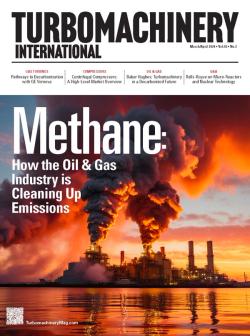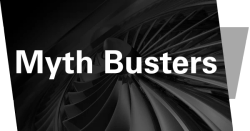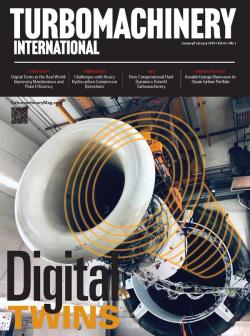
OR WAIT null SECS
© 2024 MJH Life Sciences™ and Turbomachinery Magazine. All rights reserved.
MYTH BUSTERS
MYTH: MY GAS TURBINE OEM WILL BE AROUND FOREVER
Irecently had to dispose of my high-end refrigerator. It was only a little over five years old and just out of factory warranty. But it stopped working and I quickly discovered that the required repair part — a motherboard power supply — was not being manufactured anymore and was out of stock.
The manufacturer of this refrigerator, a well-known appliance and electronics OEM from Asia, had simply discontinued this model about three years ago. There was no way to repair my fairly new refrigerator that had cost well over $2,500 when I bought it. My high-end appliance was effectively $2,500 of scrap metal. Unfortunately, this rather depressing experience is not one that is limited to just home appliances but can easily happen to gas turbine users.
The design life of gas turbines, per API 616, is supposed to be at least 25 years. But over the last quarter of a century, 12 gas turbine manufacturers have gone out of business or abandoned new equipment sales and 35 gas turbine models have been dropped by existing OEMs.
Consequently, well over 50 gas turbine product models have been discontinued in this time period. Some better known examples of these are the Ruston TAs and TBs, the Fiat TTGs, the Dresser Rand DR-990, and most of Turbomeca’s mechanical drives. But there are many lesser known models that have experienced the same fate.
Many engine models are dropped from production when they become technologically or commercially obsolete, when newer models make them redundant in an OEM’s product line, or when an OEM goes bankrupt. For the buyer of any of these discontinued machines, the purchase of repair parts, consumables, overhauls, as well as finding a trained technician becomes a huge adventure, and is often impossible.
For the purchasers of some of the approximately 120 early Fiat TTG models that were sold between the 1960s and late 1990s, for example, it is currently difficult to find a supplier for parts, a service network, troubleshooting support and a qualified overhaul shop. They, therefore, own a piece of machinery that effectively may not be supported when it fails or cannot be overhauled when it reaches its hot-section design limit.
A look at an older Turbomachinery International Handbook tells an interesting story: Just over the last 5 years, 14 major gas turbine products have been discontinued. Obviously, the inability to repair or overhaul makes an expensive turbomachinery fleet asset nearly worthless; effectively scrap metal. Some desperate operators have even resorted to making parts themselves. This is not just costly and inefficient but it also bears significant operational risk and legal liability.
On the other hand, there are 3rd-party suppliers for parts but most of them focus on the most popular product lines, such as the GE, Solar, Siemens, Mitsubishi, and Rolls- Royce product lines, for which parts and service are also available from the OEM
Purchasing departments in large companies are often driven by first-cost and total-pricing considerations when selecting a gas turbine, compressor, or other turbomachinery. While equipment price is certainly important, the financial stability and credibility of the manufacturer, its sub-suppliers, and its long-term commitment to a product line should also be a consideration.
So, what to look for? Reputable manufacturers should be in a position to discuss the obsolescence strategy for its products, and the current availability of parts. Planning for obsolescence is a key factor in the strategy of an OEM that cares about product support for its customers.
Abrupt elimination of a product will cause undue pain to users, and whenever possible there should be a transition period for migration to a new product. This is particularly important for electronics and controls, where the technology advances are so dramatic and happen in shorter and shorter time periods.
New designs that are backward compatible should easily adapt a new component or assembly to existing units. A number of turbomachinery manufacturers do take the support of older equipment seriously, and may even make it a centerpiece of their development strategy.
One should always remember that a gas turbine is a long-term capital asset that, just like my refrigerator, becomes obsolete when it cannot be repaired or maintained.
We welcome your opinion and input on this interesting and important topic and will make every attempt to respond to your letters.
Authors
Klaus Brun is the Machinery Program Director at Southwest Research Institute in San Antonio, Texas. He is also the past Chair of the Board of Directors of the ASME International Gas Turbine Institute and the IGTI Oil & Gas applications committee.
Rainer Kurz is the manager of systems analysis for Solar Turbines Incorporated in San Diego, CA. He is an ASME Fellow since 2003 and past chair of the IGTI Oil & Gas applications committee.



